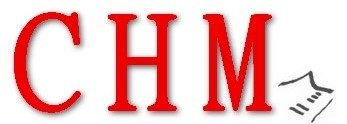Video by Artiphon via YouTube
Source

Orbasynth is a standalone desktop app for Mac & Windows available for free at https://artiphon.com/downloads. In this video, we’ll give an overview of Orbasynth’s eight modules, which represent different elements of the synth engine in order of their signal flow.
Full transcription:
To get started, connect your Orba, and make sure your output is set correctly. At the top, we have the toolbar, which allows you to zoom in and out and engage mono mode or save and load presets.
First, you have the source of Orba’s unique tone. Two oscillators, each with variable wave shapes. You can choose a sync or pulse waveform, and combine these with saw or triangle waveforms for each oscillator. The transition time determines how long it takes for the wave shape to morph from its starting shape to its end shape or its starting level to its end level.
Next, we have the globals section which allows you to adjust the levels and VCA destinations for the oscillators, ring mod, and noise. You can also adjust the LFO rate and octave.
The VCA module is where you can adjust the envelope for VCA 1 and 2. The velocity peak, sustain, and release parameters adjust how much the note velocity impacts the sound. So if I turn each of these all the way up, then the peak, sustain, and release levels are all proportional to how hard I tap on Orba’s pads.
The resonant filter section allows you to add either a lo-pass or hi-pass filter. The filter you select can then be controlled with its own envelope. The cutoff key controls the cutoff in proportion to the note frequency, so if you turn this up, higher notes have a much higher cutoff than low notes. The envelope mod dial controls how the filter envelope modulates the filter cutoff frequency. With a positive value, the cutoff is highest at the envelope’s peak, and with a negative value, the cutoff is lowest at the envelope’s peak.
The waveguide module lets you emulate either a string or pipe tone, but can be bypassed by setting the dry mix to zero. Hold and release damp allows you to adjust how much damping occurs while the note is held, and when it is released.
The gesture mapping module is essential to Orba’s expressive nature because this is where you can assign gestures such as tilt and radiate directly to synth parameters like filter cutoff. Positive and negative values affect the destinations accordingly, and setting the dial right in the middle does not have any effect on the destination.
Lastly is the output, where you can add reverb and delay to your sound, as well as adjust the output level of Orbasynth.
———————————————————————
👉 See more at https://artiphon.com/
👍 Leave a thumbs up if you enjoyed this video!
🛎Never miss a beat by subscribing to our channel here:
https://www.youtube.com/user/Artiphon?sub_confirmation=1
———————————————————————
Follow Artiphon on socials! Tag @Artiphon and #OrbaLoops or #INSTRUMENT1 to share your videos and get featured.
Instagram ▶https://www.instagram.com/artiphon/
TikTok ▶ https://www.tiktok.com/@artiphon
Twitter ▶https://twitter.com/artiphon
Facebook ▶ https://www.facebook.com/Artiphon/
Snapchat ▶ https://www.snapchat.com/add/artiphon
